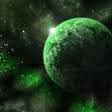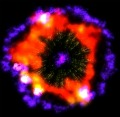|
Have I found earth 2.0?
|
|
|
|
|
| Tac1017 | Date: Tuesday, 03.03.2015, 02:00 | Message # 16 |
 Explorer
Group: Users
 United States
United States
Messages: 167
Status: Offline
| Good news community. I found a planet that is EVEN BETTER than this one. The ESI is lower, but many things make this planet better. If you want, I would be glad to upload images on that one instead.
The Terra Hunter of the Milky Way!
(By the way, I was born in 2001, NOT 1972 XD)
|
| |
| |
|
| Watsisname | Date: Tuesday, 03.03.2015, 04:42 | Message # 18 |
 Galaxy Architect
Group: Global Moderators
 United States
United States
Messages: 2613
Status: Offline
| Looks great! I agree it is better than your first one. The only concern I can see is the average molar mass of the air, which suggests it may be mostly CO2.
Cool that the tropopause height is comparable to Earth's. Maybe has similar thermal structure and weather patterns.

|
| |
| |
| Tangle10 | Date: Tuesday, 03.03.2015, 11:42 | Message # 19 |
 Space Pilot
Group: Users
 United States
United States
Messages: 129
Status: Offline
| Issues with Kastalo: Axial Tilt (45 deg), -2 C (far colder than Earth), Non-dense atmosphere. Sky Color? Looks misty and not Earthlike.
Issues with Tundrix: Star. M class may appear often, but they suck. A lot. Try early K. 9 C (a bit colder than Earth). Sky Color? (it's practically invisible)
Tips for finding Earth-Like planets: Look for F, G, or K Class stars. M class habitables will almost always be tidelocked. Oceanias can, of course, also be habitable, they just have tiny amounts of land.
|
| |
| |
| Tac1017 | Date: Tuesday, 03.03.2015, 12:34 | Message # 20 |
 Explorer
Group: Users
 United States
United States
Messages: 167
Status: Offline
| @tangle
I actually WANT a type M star for Tundrix. Why you ask? It's that The planet will have more time to have life evolve. Luckily It has a moon that avoids it from being tidally locked!
I look normally at type K2V stars for earth-like planets. they have long lifespans, and they have lifespans over three times as long as the suns lifespan.
If you look at the main star of the system, it's K2V. I Just found Tundrix by accident.
@ tangle
Maybe the reason for a majorly carbon atmosphere is because of volcanic activity on the planet. The color of th atmosphere if you land on it is Colored like that of earths, which exites me, as maybe the secondary gas is Oxygen. Tundrix IS BETTER THAN EARTH
The Terra Hunter of the Milky Way!
(By the way, I was born in 2001, NOT 1972 XD)
Edited by Tac1017 - Tuesday, 03.03.2015, 12:53 |
| |
| |
| Nol | Date: Tuesday, 03.03.2015, 18:20 | Message # 21 |
 Space Pilot
Group: Users
 Germany
Germany
Messages: 97
Status: Offline
| The Surface of Tundrix looks very cold.
"Eins - Hier kommt die Sonne
Zwei - Hier kommt die Sonne
Drei - Sie ist der hellste Stern von allen
Vier - Hier kommt die Sonne"
-Rammstein, Sonne, Mutter, 2001
|
| |
| |
| Tangle10 | Date: Tuesday, 03.03.2015, 18:46 | Message # 22 |
 Space Pilot
Group: Users
 United States
United States
Messages: 129
Status: Offline
| Quote Tac1017 (  ) Tundrix IS BETTER THAN EARTH
I would dispute the idea that a gravity of .1 more than what we were designed for and an atmospheric pressure of .2 less than what we were designed for is better than what we were designed for.
Tips for finding Earth-Like planets: Look for F, G, or K Class stars. M class habitables will almost always be tidelocked. Oceanias can, of course, also be habitable, they just have tiny amounts of land.
|
| |
| |
| Tac1017 | Date: Wednesday, 04.03.2015, 00:20 | Message # 23 |
 Explorer
Group: Users
 United States
United States
Messages: 167
Status: Offline
| Quote Nol (  ) The Surface of Tundrix looks very cold.
Well... an atmosphere majorly of carbon dioxide would help make the planet safer to live on. To add off, the ice on most of the land masses can be used for more water sources. Volcanic energy would be plentiful as well, and greenhouse gasses could be emitted from these sources to create an intentional global warming to create more sources for fresh water, which can be more easily distilled and "marketed".
This planet's moon also has an orbit of just 11 hours, so Tundrix is actually tidally locked to it's satellite and vice versa. This allows for the energy of the host star to be more evenly distributed. This allows for more stellar energy.
I imagine this planet is rich in energy sources and valuable metals such as diamonds and other igneous and pressurized crystals that ar valuable on earth. Fossil fuels can be very common on this planet as well as they could be beneath ice, which could also be a resource that could be melted for water.Added (03.03.2015, 23:20)
---------------------------------------------
Who agrees with my concept of this planet?
The Terra Hunter of the Milky Way!
(By the way, I was born in 2001, NOT 1972 XD)
Edited by Tac1017 - Wednesday, 04.03.2015, 00:19 |
| |
| |
| Tangle10 | Date: Wednesday, 04.03.2015, 11:13 | Message # 24 |
 Space Pilot
Group: Users
 United States
United States
Messages: 129
Status: Offline
| Tac1017, 1. large amounts (anywhere above 0.5 percent really) of carbon dioxide get close to killing you.
2. an 11 hour period might cause tides (anyone find any papers about tidally locked, well, tides?) and more stellar energy makes no sense when your star emits less stellar energy than our sun.
3. Why would it be rich in fossil fuels? We don't know how old the life is. Diamonds does make sense- the planet is two billion years older than our planet after all. However, have its tectonic movements stopped? Would a different star and the tides cause tectonic movements to work weirdly?
Tips for finding Earth-Like planets: Look for F, G, or K Class stars. M class habitables will almost always be tidelocked. Oceanias can, of course, also be habitable, they just have tiny amounts of land.
|
| |
| |
| easterninferno | Date: Wednesday, 04.03.2015, 13:11 | Message # 25 |
 Space Tourist
Group: Users
 Pirate
Pirate
Messages: 39
Status: Offline
| Wish i could play SE...Im stuck with this low grade computer...Maybe in a year or two... 
When will our goverments forget about the borders,and start looking into the stars as a species?
|
| |
| |
| DiscovererOfWorlds | Date: Wednesday, 04.03.2015, 15:33 | Message # 26 |
 Space Pilot
Group: Users
 Italy
Italy
Messages: 120
Status: Offline
| what is the code RS for this planet?
the universe is made to be explored, but no one will ever visit it all
|
| |
| |
| n3xt | Date: Wednesday, 04.03.2015, 18:40 | Message # 27 |
 Explorer
Group: Users
 Netherlands
Netherlands
Messages: 184
Status: Offline
| Why are you all worried about the yellow main-sequence star (dwarf) ??
I mean, yeah well it is at 13 billion years but take a good look at it's mass...
If it's at approximately 0.75 Solar masses it will last about another 5 billion years !!
Relax 
Not to forget mentioning it takes the star roughly 1 up to 1.5 billion years to fully expand as a red giant.
Another example would be if the star initially started as a K0, K1 or K2-type main sequence star at 0.75 Solar masses, it would've gradually increased in temperature and spectral type. In other words it would've changed from spectral type K to late G, especially after 13 billion years.
Another interesting feature would be ''metallicity''. A star at only 10% metallicity (compared to the Sun's 100% metallicity, for example) would have much longer lifetimes.
Edited by n3xt - Wednesday, 04.03.2015, 19:53 |
| |
| |
| Nol | Date: Wednesday, 04.03.2015, 19:25 | Message # 28 |
 Space Pilot
Group: Users
 Germany
Germany
Messages: 97
Status: Offline
| n3xt, Yellow Dwarfs are Yellow Dwarfs. The Planet is simply too old. Plus, the Atmosphere is very, VERY dangerous to Humans. Just look at the Color! It isn't habitable for us.
"Eins - Hier kommt die Sonne
Zwei - Hier kommt die Sonne
Drei - Sie ist der hellste Stern von allen
Vier - Hier kommt die Sonne"
-Rammstein, Sonne, Mutter, 2001
|
| |
| |
| n3xt | Date: Wednesday, 04.03.2015, 19:33 | Message # 29 |
 Explorer
Group: Users
 Netherlands
Netherlands
Messages: 184
Status: Offline
| Yeah I've noticed that about the atmosphere... It might be rich in carbon-dioxide and with traces of evaporating water (H2O) that would result in strong greenhouse effects.
I disagree on ''yellow dwarfs'' are yellow dwarfs though...
|
| |
| |
| Dodecahedron | Date: Thursday, 05.03.2015, 14:01 | Message # 30 |
 Astronaut
Group: Users
 United States
United States
Messages: 58
Status: Offline
| Earth will, via processes of plate tectonics and increasing solar irradiance, become this planet in 850-900 million years
RS 251085-507-7-981758-2821 A4

Unlike Earth however, this planet does not have life at this stage. The earth should have some colonial life in its polar seas at that time, possibly some multicellular life in the seas as well. The geology of the future beyond a mere 100 million years is very vague for earth, the splitting of the next supercontinent is nearly impossible to predict. This planet was in a supercontinent phase at the time when the seas dried, you can tell by the single, large lake most likely the remnant of the superocean that existed.
According to some simple math done by watsisname, a possible composition of this planets atmosphere is 69% CO2 and 30% N2 (i have left leg room for trace gases such as Ar). Our earth at an equivalent time should be similar. So i think this is a much better Earth 2.0 than the ones you listed.
" What compromises in precision should scientists make in the name of tradition, sentiment, and good public relations?"
None
Edited by Dodecahedron - Friday, 17.04.2015, 13:07 |
| |
| |